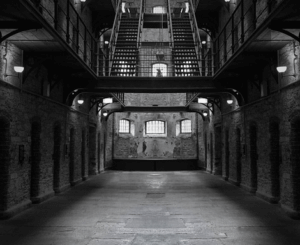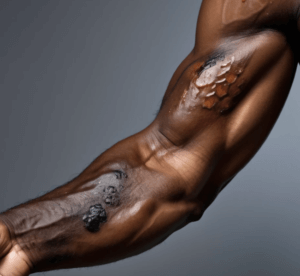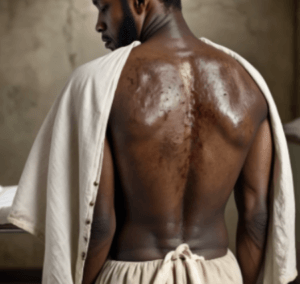Holmesburg Prison, also known as the ‘Terror Dome’, once a testing ground in Philadelphia, hides a frightening story of medical experiments between 1951 and 1974. The University of Pennsylvania, prison staff, and scientists organized experiments for profit on inmates.
Understanding the Past
Before we dive into the scary parts, let’s look into the minds of doctors from the past. The shocking statements from neurosurgeon Harry Bailey, Dr. Thomas Murrell, and H. Martineau reveal unsettling beliefs about African Americans.
- Neurosurgeon, Harry Bailey, M.D., in his 1960 speech at Tulane Medical School said, “Cheaper to use (n-words) than cats because they were everywhere and cheap experimental animals.”
- “The future of the Negro lies more in the research laboratory than in the schools… When diseased, he should be registered and forced to take treatment before he offers his diseased mind and body on the altar of academic and professional education.” — Thomas Murrell, M.D., U.S. Public Health Service, 1910.
- “In Baltimore, someone exclusively takes the bodies of colored people for dissection,” [H. Martineau] remarked, “because the Whites do not like it, and the colored people cannot resist.” year 1853. (Forty years of medical racism p.26 (Excerpt from medical studies using blacks)
Roots of Medical Racism
Contrary to what many think, the roots of medical racism didn’t start with Tuskegee. Earlier institutions set the stage, turning the mistreatment of Black inmates into a moneymaking enterprise for white physicians.
Now, let’s jump into the world of Dr. Albert Kligman’s research–Holmesburg Prison, a place filled with victims, haunted by the echoes of funding that fueled the haunting experiments within its cold walls.
Section 1: Kligman’s Reign
Recruitment and Consequences
Imagine a place full of healthy African-American men becoming the main test subjects. Persuaded by doctors and staff, these men participated in destructive experiments for a meager compensation of $10 or less. The prison medical team meticulously documented severe long-term effects–blistering testicles from the application of acids, removal of sweat glands, cyst scars, and rashes that defied any cure.
Section 2: Inside the ‘Terrordome’
Living Conditions at Holmesburg Prison
Step into Holmesburg Prison, established in 1896–a place to address overcrowding at Philadelphia’s Moyamensing Prison. Its atmosphere was dirty, dingy, and deadly. Envision the interior of a large facility, a burial place where the living goes to be forgotten. Temperatures in cell isolation blocks soared above 100 degrees.
Walk through its doorway and into its corridors. The smell hits you like a surprise you never saw coming. It’s not just hot–it’s like the air itself is tired and sweaty. Imagine taking a deep breath, and all you get is a lingering scent of old air that hasn’t been refreshed in ages.

But that’s not all. Underneath that heavy air, there’s a moldy smell, like when you forget to open your gym bag for days. It’s like the building is holding its breath, and you’re stuck inhaling its musty secrets. And guess what? It’s not just a regular mustiness; it’s the kind that comes from dampness and poor ventilation as if the walls themselves are sighing.
Now, here’s the surprising twist–add in a dash of dust and decay. Imagine a scenario: Whirlwinds of tiny particles dance in the air, creating a tornado of filth that catches you off guard. These particles bear the scent of neglect, like finding a forgotten old book in the attic.

And just when you thought it couldn’t get any worse, there’s an overpowering unpleasantness in the air. It’s not just one bad smell; it’s a mix of everything bad. A smelly symphony that assaults your senses. Hold your nose because there’s also a faint but unsettling chemical stench.
So, there you have it–the foundation of discomfort and danger. It’s not just a bad smell; it’s an unexpected assault on your nose that makes you wish for fresh air ASAP.
Who knew a place could surprise you with such an unpleasant olfactory experience leading to the tragic demise of numerous inmates?
Section 3: Rise of Albert Kligman
From Rejection to Experimentation

Let’s discuss how Dr. Albert Kligman transitioned from facing rejection to conducting experiments. Dr. Kligman graduated from prestigious Pennsylvania schools. During World War I, he faced rejection from the U.S. government research team due to his connection to communism.
Fueled by anger, he sought ways to attain fame and respect in the medical field. After that, in 1951, he began doing medical tests at Holmesburg Prison. Sadly, these tests were not ethical.
Section 4: Kligman’s Inhumane Experiments
Unveiling Shocking Experiments
Kligman, the top researcher, conducted inhumane medical experiments on hundreds of prisoners from dermatological experiments to administering hallucinatory drugs.
In 1966, the Pittsburgh Inquirer reported that upon Kligman’s first visit to Holmesburg Prison, he looked out across the inmate population. He was instantly gratified, so much so, that he summarized his visit by saying, “All I saw before me were acres of skin. I was like a farmer seeing a fertile field for the first time.”
Section 5: The Scope of Kligman’s Actions
Holmesburg Prison Test Subjects
Picture this: the application of highly toxic Dioxin, the primary ingredient in Agent Orange, on inmates’ skin at a staggering 468 times the recommended dose. This toxic exposure inflicts severe damage to the cells and tissues, paving the way for the development of malignant tumors and severely impairing the body’s ability to fend off diseases. He further subjected them to radioactive and various other carcinogenic chemicals. To add to the ordeal, injections of wart virus, vaccinia, herpes simplex, and herpes zoster were administered, plunging the prisoners into a hellish realm of suffering.

Section 6: Contractual Partnerships and Ethical Questions
Questioning Ethical Choices
Contemplate Kligman’s unethical experiments persisting for two decades, supported by various partnerships. Kligman abused mostly black prison inmates. Government and pharmaceutical partnerships, including Dow Chemical Corporation, R. J. Reynolds, U.S. Army Chemical Corps, and Johnson & Johnson each had a financial role. In 2019, the University of Pennsylvania released an apology for its role in the unethical biomedical research.
For an extended period, Kligman and his associates skillfully avoided ending the experiments. Think about the troubling idea of big companies affecting court cases to keep access to black prisoners for testing.
Conclusion: Unraveling Kligman’s Legacy
In 1974, Kligman’s experiments finally ceased. Nevertheless, he received acknowledgment and applause from the medical community. Despite destroyed documents, Kligman’s legacy of cruelty endures. Such as the development of Retin-A (acne medications) on the backs of African American men. He smeared various chemical agents until the desired result was achieved.

The legacy of scientific racism serves as a haunting reminder of the dark side of medical history, lingering like an ominous shadow.

Sources:
Image Credit: https://collections.nlm.nih.gov/catalog/nlm:nlmuid-101420539-img
http://archive.boston.com/bostonglobe/obituaries/articles/2010/02/22/albert_m_kligman_dermatologist_who_discovered_retin_a/
https://www.med.upenn.edu/evpdeancommunications/2021-08-20-283.html
https://en.wikipedia.org/wiki/Holmesburg_Prison
https://en.wikipedia.org/wiki/Albert_Kligman

